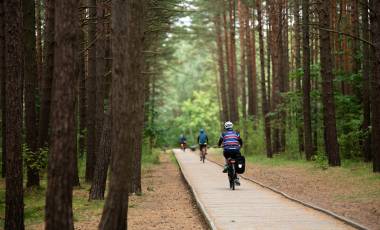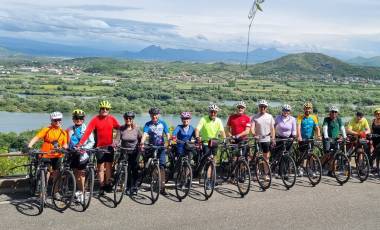
8 Essential Items You Need for Cycling in the Cold
Read time – 3 minutes
As the frost settles on the ground, the question to ask is should the cold and wet put you off getting on your bike and training for the upcoming warmer days?
Absolutely not! There is an old saying from many a grizzled cyclist: “There’s no such thing as bad weather, just bad clothing”.
Choosing the Best Cycling Equipment
Perhaps many years ago this would have been laughed at, but fortunately for us, we now live in a time where cycling equipment to combat the cold weather is widely available and made from the very best lightweight materials.
With that in mind, we have come up with the perfect checklist to stay warm and dry and to ultimately say “PAH!” to winter – expertly modeled by our own cycling expert David Sear.
After all, if you can conquer cycling in the cold British winter there’s nothing you can’t do!
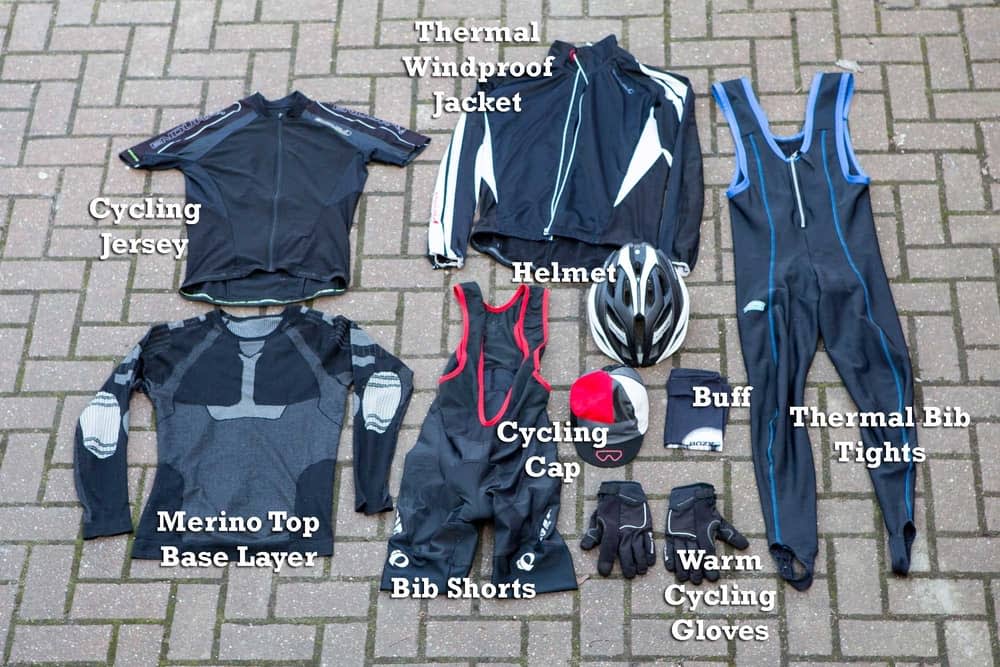 Essential cycling items
Essential cycling items
1) Merino Top Base Layer
As with any cold weather checklist, it begins with the base layer. As you will be burning energy on your ride and warming up with every pedal, it’s good to have a comfortable base layer that will be breathable at the same time.
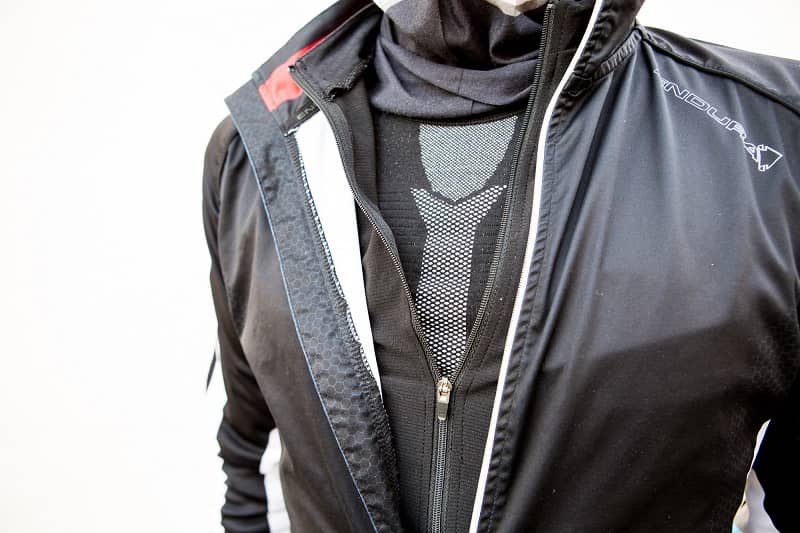 Layers are the key
Layers are the key
2) Bib Shorts
These are essentially shorts with inbuilt padding for comfort on those longer rides that will be held up by shoulder straps. The idea here is that there will be no gap between your bottom and top half leaving exposed skin to the chilly elements.
3) Thermal Bib Tights
These will cover the rest of your legs keeping your entire bottom half nice and toasty without restricting movement. Think a thinner, tighter pair of salopettes.
4) Cycling Jersey
This sits over the thermal top as part of the layering system. Cycling jerseys are better than sporty t-shirts as the zip at the front allows you to regulate your temperature as you see fit. They usually have handy pockets at the back for quick access to energy gels and snacks.
 Our cycling experts in their jerseys
Our cycling experts in their jerseys5) Thermal Windproof Jacket
If it is dry then this is the final piece of the puzzle for the layering system. It should be light so you can store it into a rucksack or pannier bag, but ultimately this will protect your top half from the biting wind.
6) Waterproof High Vis Jacket
If it is wet, you will obviously need this as without it all of the hard work you put in perfecting the layering system becomes useless. High visibility is also key in the wet as natural light fades when the clouds roll in.
7) Warm Cycling Gloves
Your extremities are the first to feel the cold, especially when less active whilst holding handlebars. The temptation to grab the biggest pair of gloves will be strong, but remember you need to be able to be able to work the breaks and gears at the same time.
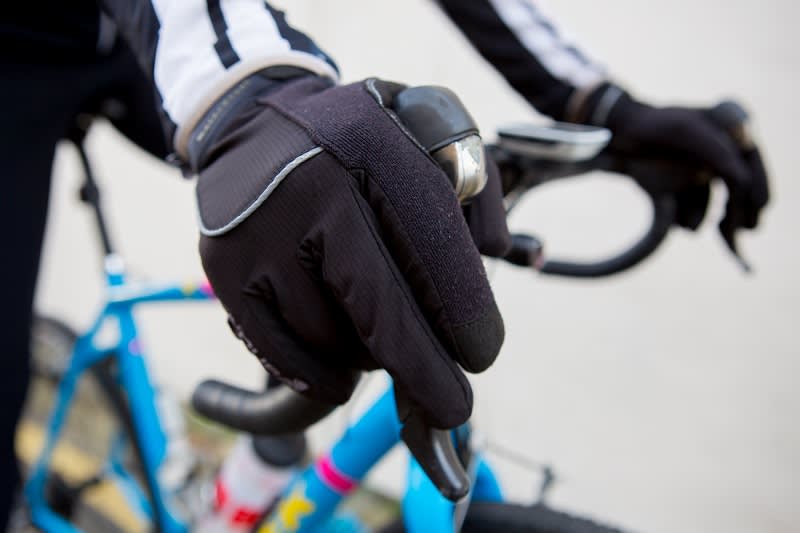 Warm cycling gloves
Warm cycling gloves8) Buff
Should the winds pick up, then having this to hand is ideal to protect the face, and thin enough to fit under your helmet should you want to cover your ears as well.
You can add a cycling cap to sit under your helmet as well – this will keep your head warm, and the visor protects you from any rain. Top it all off with that year-round cycling essential, your helmet.
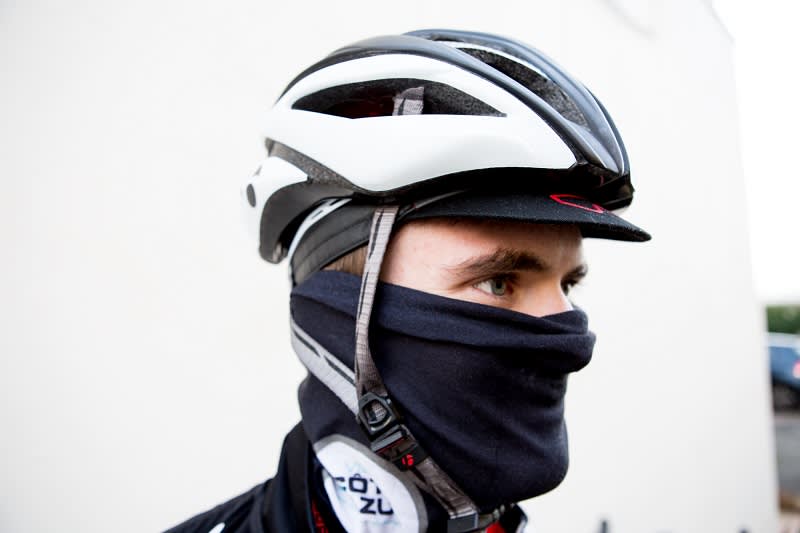 Dave wrapped up in a buff
Dave wrapped up in a buff And that’s it! With all of this kit ready to hand you are ready to get out there and get riding, whatever the weather.
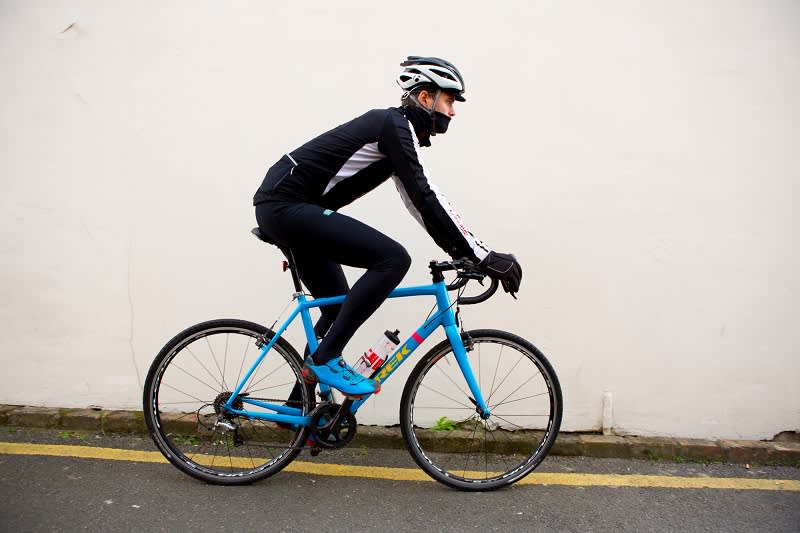 Ready for anything!
Ready for anything!Take a look at some of our cycling trips below and plan your next adventure.



